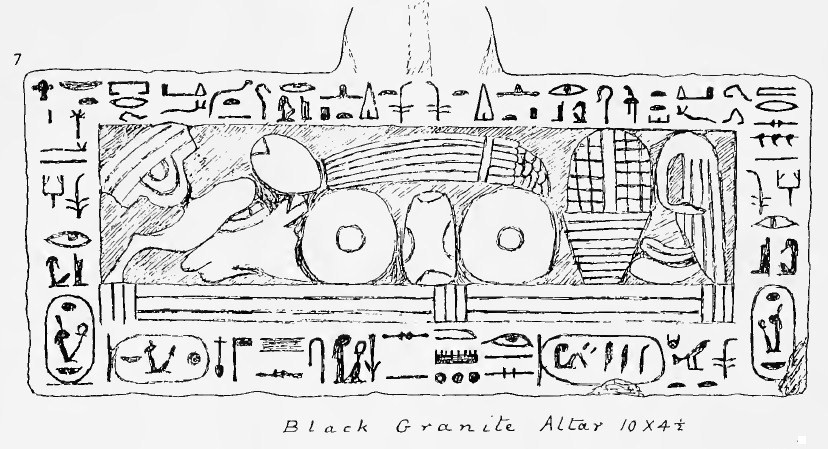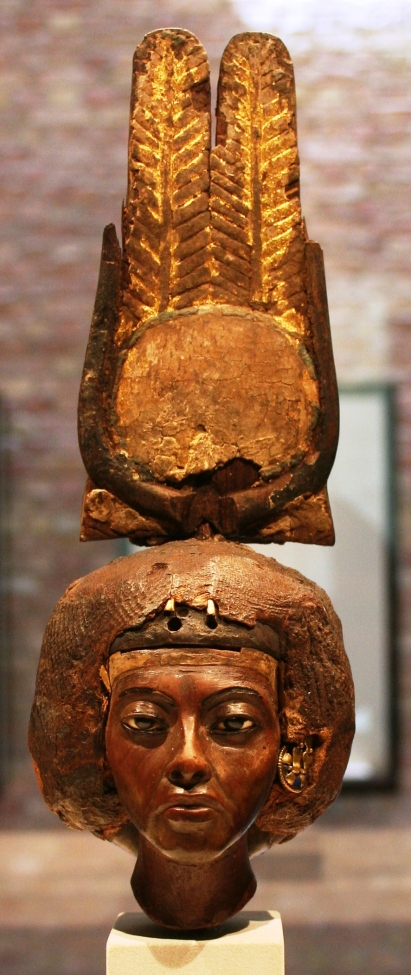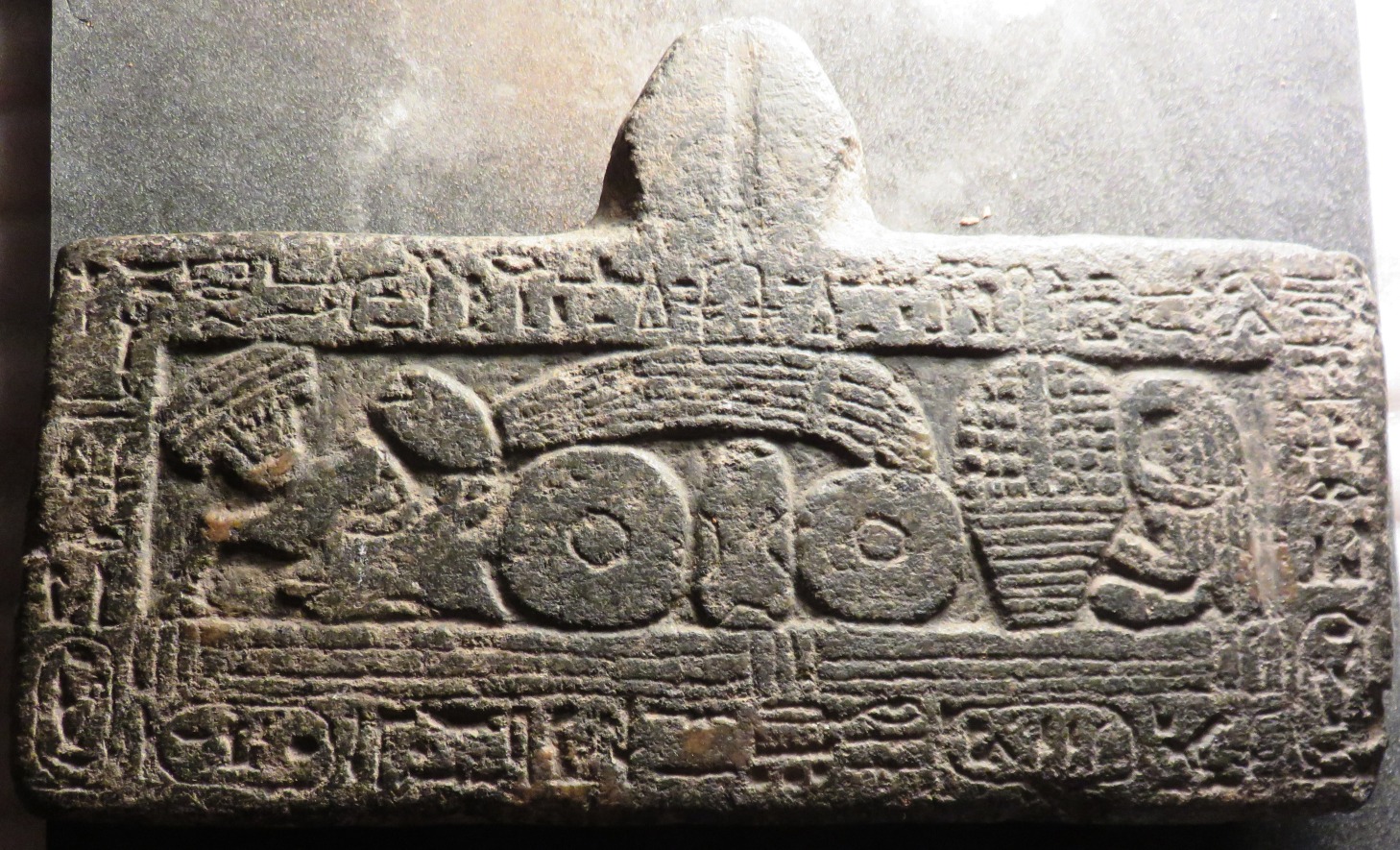Texts in Translation #15: An offering table dedicated by Queen Tiye (Acc. no. 633)
Like so many seemingly unassuming objects, this small (25 x 11 cm) black granite offering table carries an interesting back-story. It comes from the excavations of W.M. Flinders Petrie at the site of Gurob, the ‘harem’ complex used to house royal women and children in part of the New Kingdom (c. 1400-1200 BC). Manchester Museum holds many objects from Petrie’s excavations at Gurob, which is currently being reinvestigated by a joint project of the Universities of Liverpool, Copenhagen and UCL.
One of the most famous finds to have come from the site is a small ebony head of Queen Tiye, the chief wife of Amenhotep III (c. 1390-1352 BC), now in Berlin. It is likely that the queen spent a lot of time at Gurob, and the inscription on our offering table suggests she lived here as ‘Queen Mother’ after her husband’s death.
The hieroglyphs read:
An offering which the king gives (to) Osiris, Ruler of the West, that he may allow coming and going in Rosetau for the royal ka (of) the Osiris, Neb-maat-re;
An offering which the king gives (to) Osiris, Ruler of Eternity, that he may give all that comes out upon his altar for the royal ka of the Osiris, Neb-maat-re;
The Great Royal Wife, she made (it) as her dedication for her ‘brother’, her beloved, the perfect god, Neb-maat-re.
Petrie noted the importance of the piece when reviewing the inscribed finds from Gurob: “The black granite altar is of special interest. Though roughly cut it seems to have belonged to a class of funerary offerings made for Amenhotep III by his celebrated queen Thii. It follows the usual formulae to Osiris, for the royal ka of Amenhotep III, down each side ; and then along the base is a line stating that ” The great royal wife Thii made her monuments of her brother, her beloved, the good god Ra-ma-neb.’ The question of the parentage of Thii is one of the most important genealogies in Egyptian history.

Petrie’s interest focussed on the use of the Egyptian term ‘sen’, which implies kinship but is often rendered ‘brother’. In fact, Tiye’s statement need not mean that she was the sister of Amenhotep III; a more general sense of kinship may be meant (the word “husband” – written with a phallus sign – may have been inappropriate), and the affectionate sentiment of wife towards her spouse is appealing.
The fact that the offering table exists at all and the reference to the king as ‘the Osiris’ implies that Amenhotep III had died when this object was made and used. The appearance of the term ‘royal ka’ (ka nesu) is also fairly uncommon, and refers to an important (semi-)divine aspect of the king’s person, which could be separated from him and objectified for worship. Although Amenhotep III promoted his own divinity to an unusual extent during his own lifetime, it seems more likely that the ‘royal ka’ mentioned here is that of the deceased king.
One of the most famous finds to have come from the site is a small ebony head of Queen Tiye, the chief wife of Amenhotep III (c. 1390-1352 BC), now in Berlin. It is likely that the queen spent a lot of time at Gurob, and the inscription on our offering table suggests she lived here as ‘Queen Mother’ after her husband’s death.
The hieroglyphs read:
An offering which the king gives (to) Osiris, Ruler of the West, that he may allow coming and going in Rosetau for the royal ka (of) the Osiris, Neb-maat-re;
An offering which the king gives (to) Osiris, Ruler of Eternity, that he may give all that comes out upon his altar for the royal ka of the Osiris, Neb-maat-re;
The Great Royal Wife, she made (it) as her dedication for her ‘brother’, her beloved, the perfect god, Neb-maat-re.
Petrie noted the importance of the piece when reviewing the inscribed finds from Gurob: “The black granite altar is of special interest. Though roughly cut it seems to have belonged to a class of funerary offerings made for Amenhotep III by his celebrated queen Thii. It follows the usual formulae to Osiris, for the royal ka of Amenhotep III, down each side ; and then along the base is a line stating that ” The great royal wife Thii made her monuments of her brother, her beloved, the good god Ra-ma-neb.’ The question of the parentage of Thii is one of the most important genealogies in Egyptian history.

Petrie’s interest focussed on the use of the Egyptian term ‘sen’, which implies kinship but is often rendered ‘brother’. In fact, Tiye’s statement need not mean that she was the sister of Amenhotep III; a more general sense of kinship may be meant (the word “husband” – written with a phallus sign – may have been inappropriate), and the affectionate sentiment of wife towards her spouse is appealing.
The fact that the offering table exists at all and the reference to the king as ‘the Osiris’ implies that Amenhotep III had died when this object was made and used. The appearance of the term ‘royal ka’ (ka nesu) is also fairly uncommon, and refers to an important (semi-)divine aspect of the king’s person, which could be separated from him and objectified for worship. Although Amenhotep III promoted his own divinity to an unusual extent during his own lifetime, it seems more likely that the ‘royal ka’ mentioned here is that of the deceased king.


No hay comentarios:
Publicar un comentario